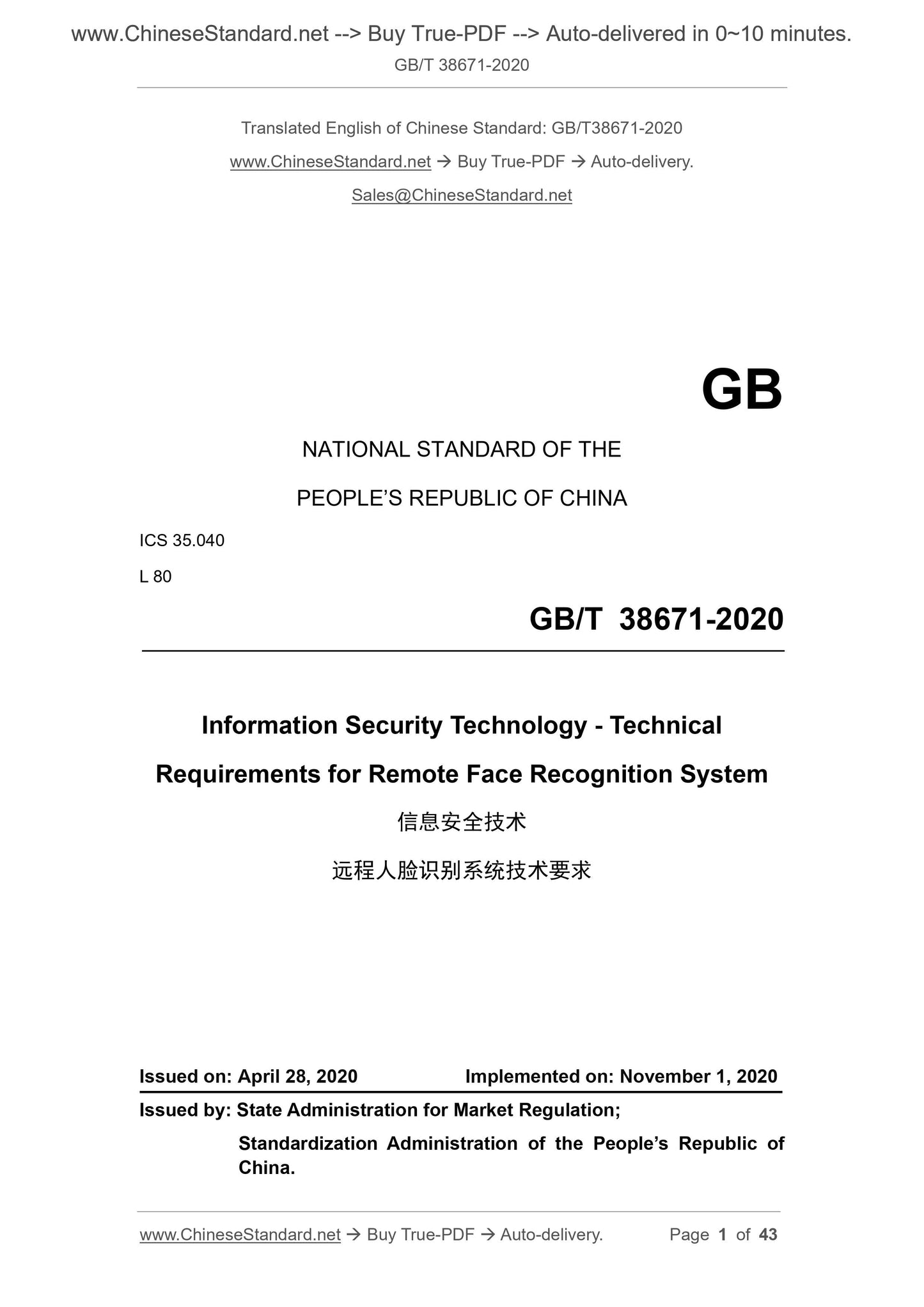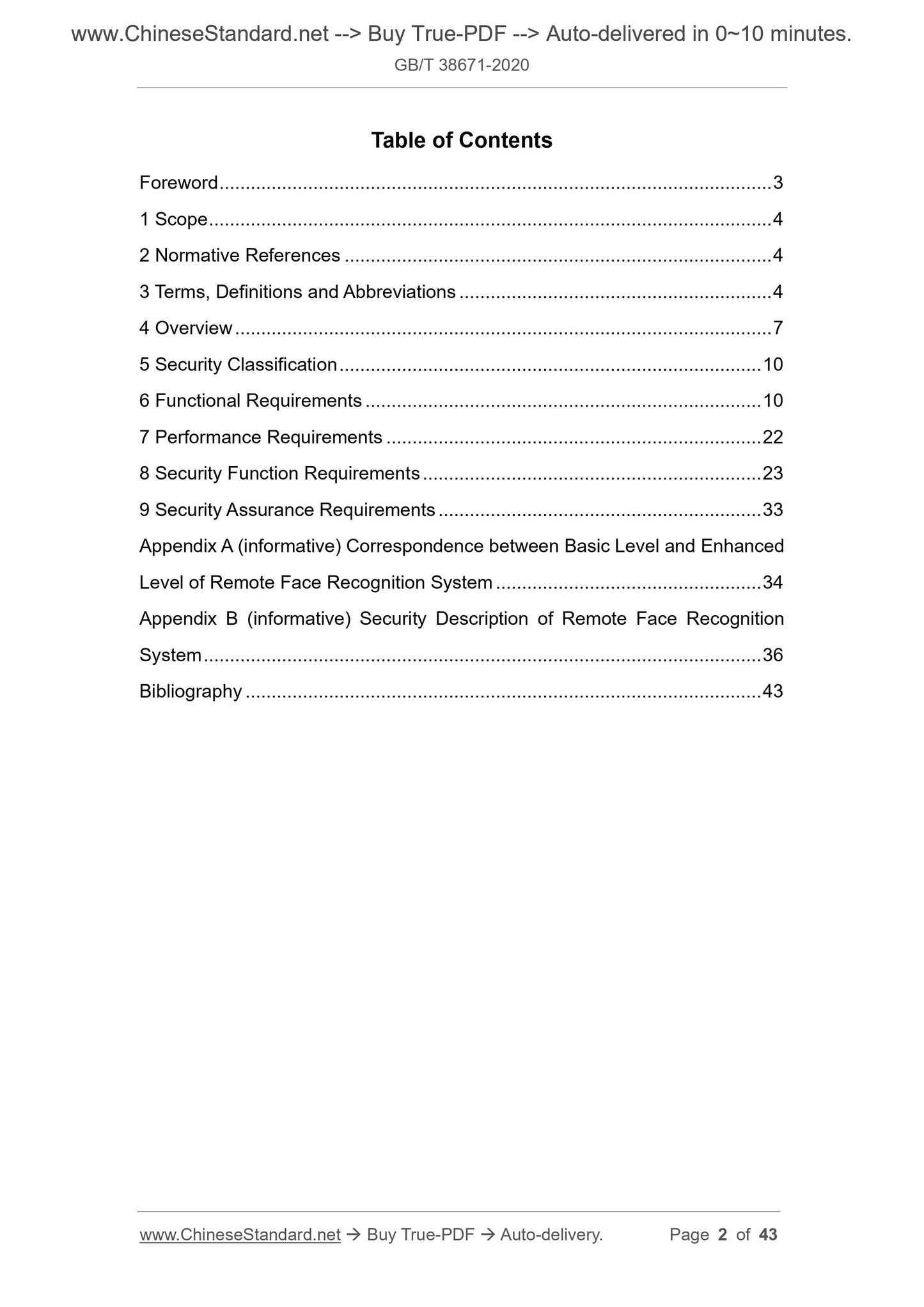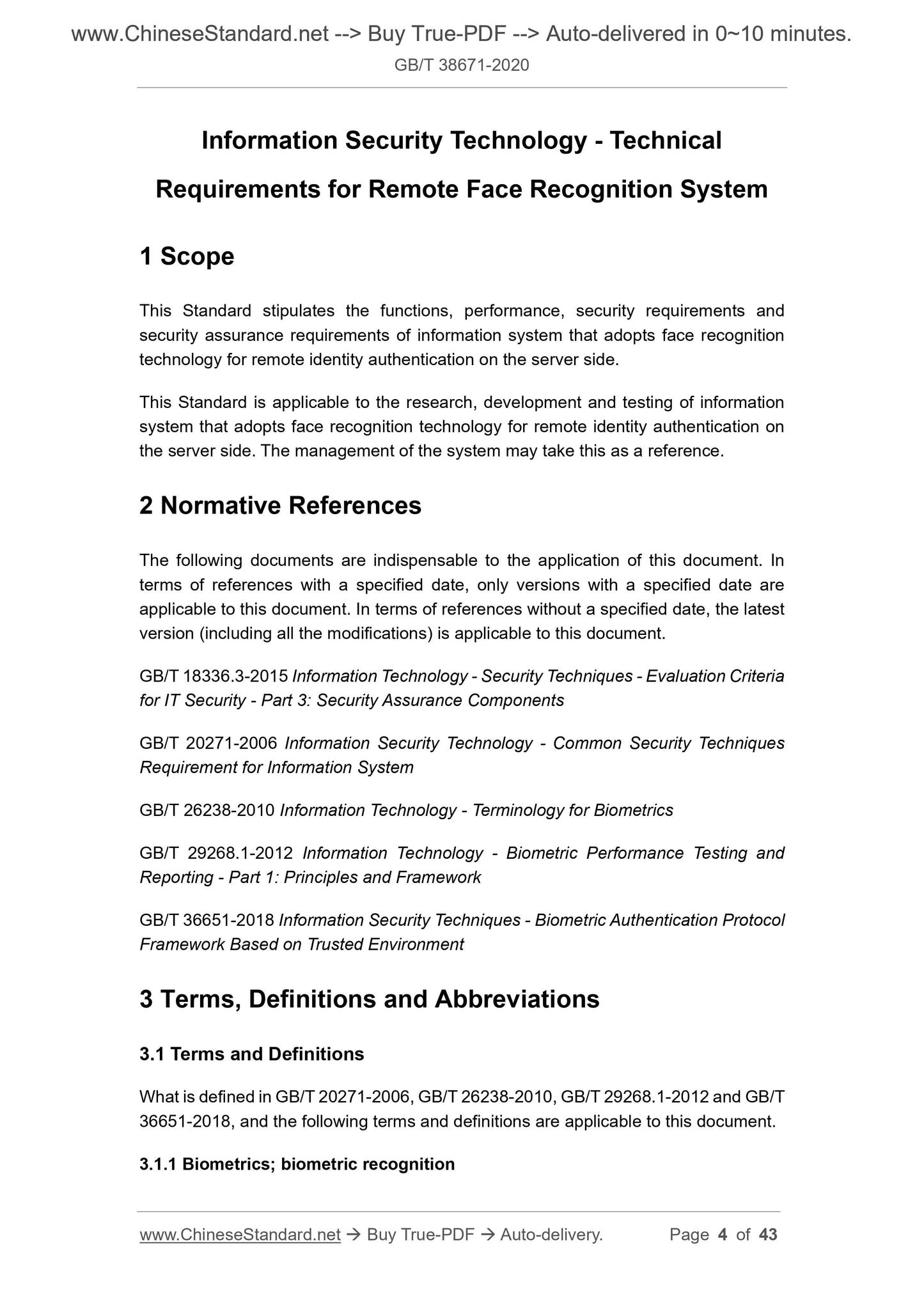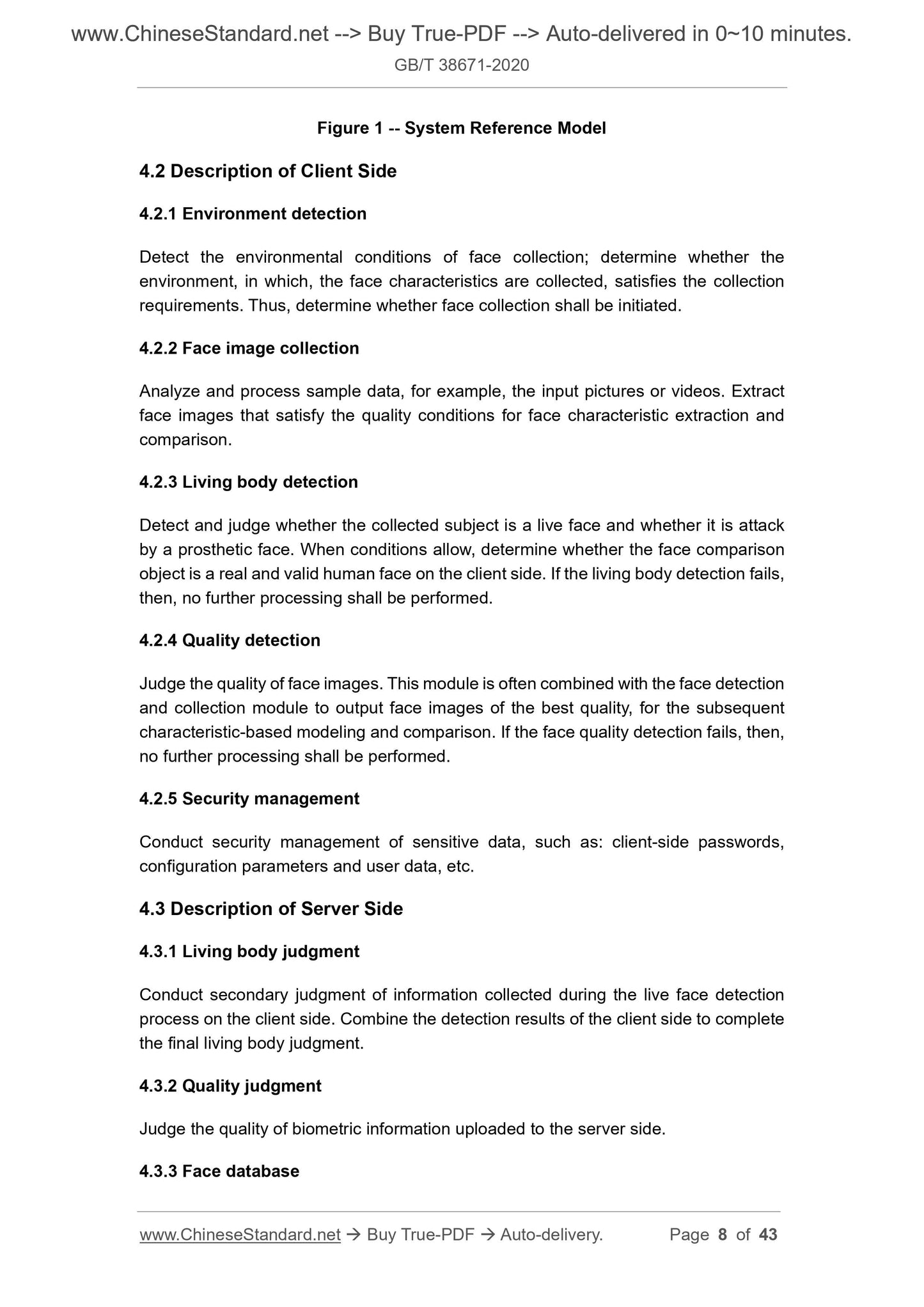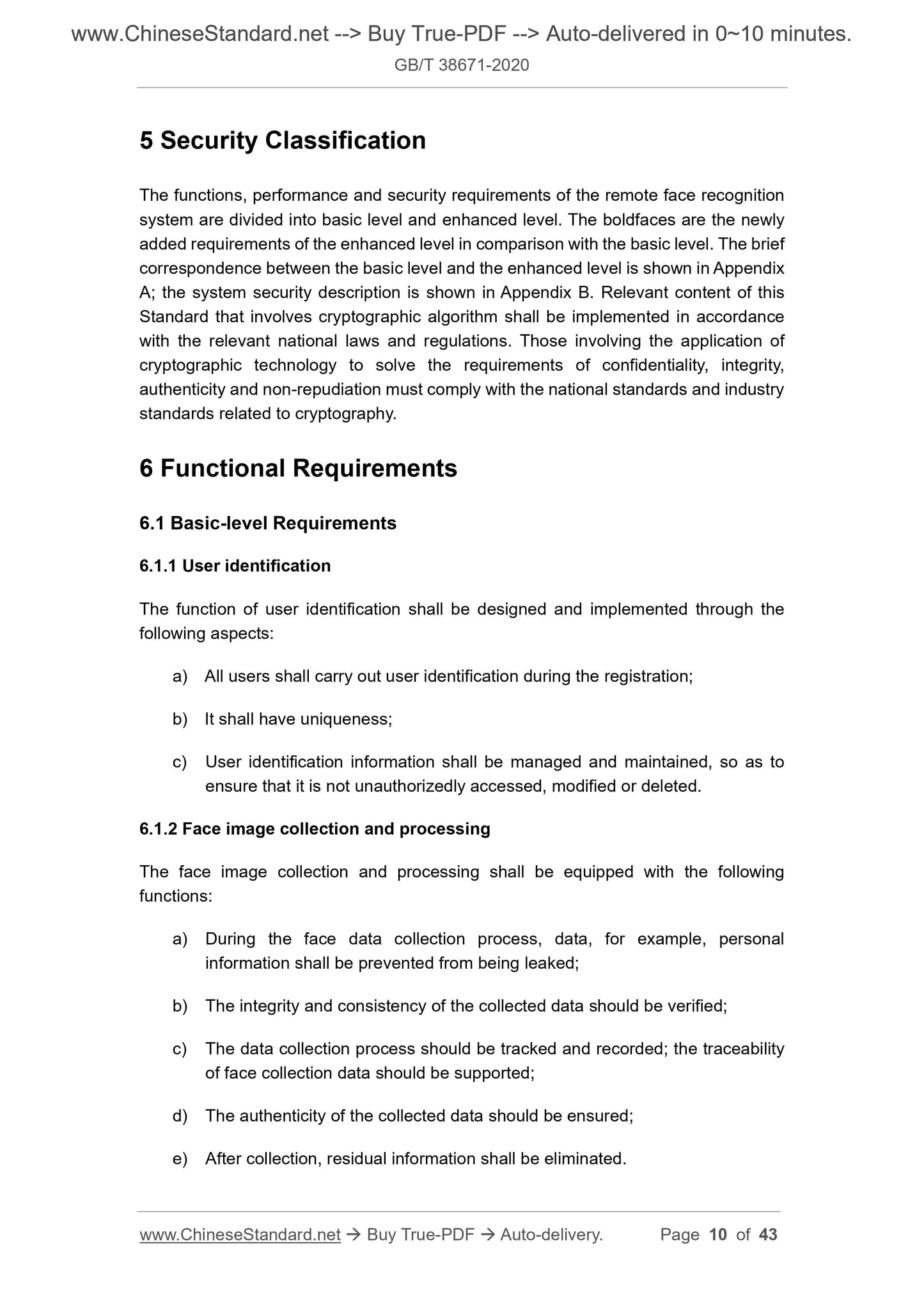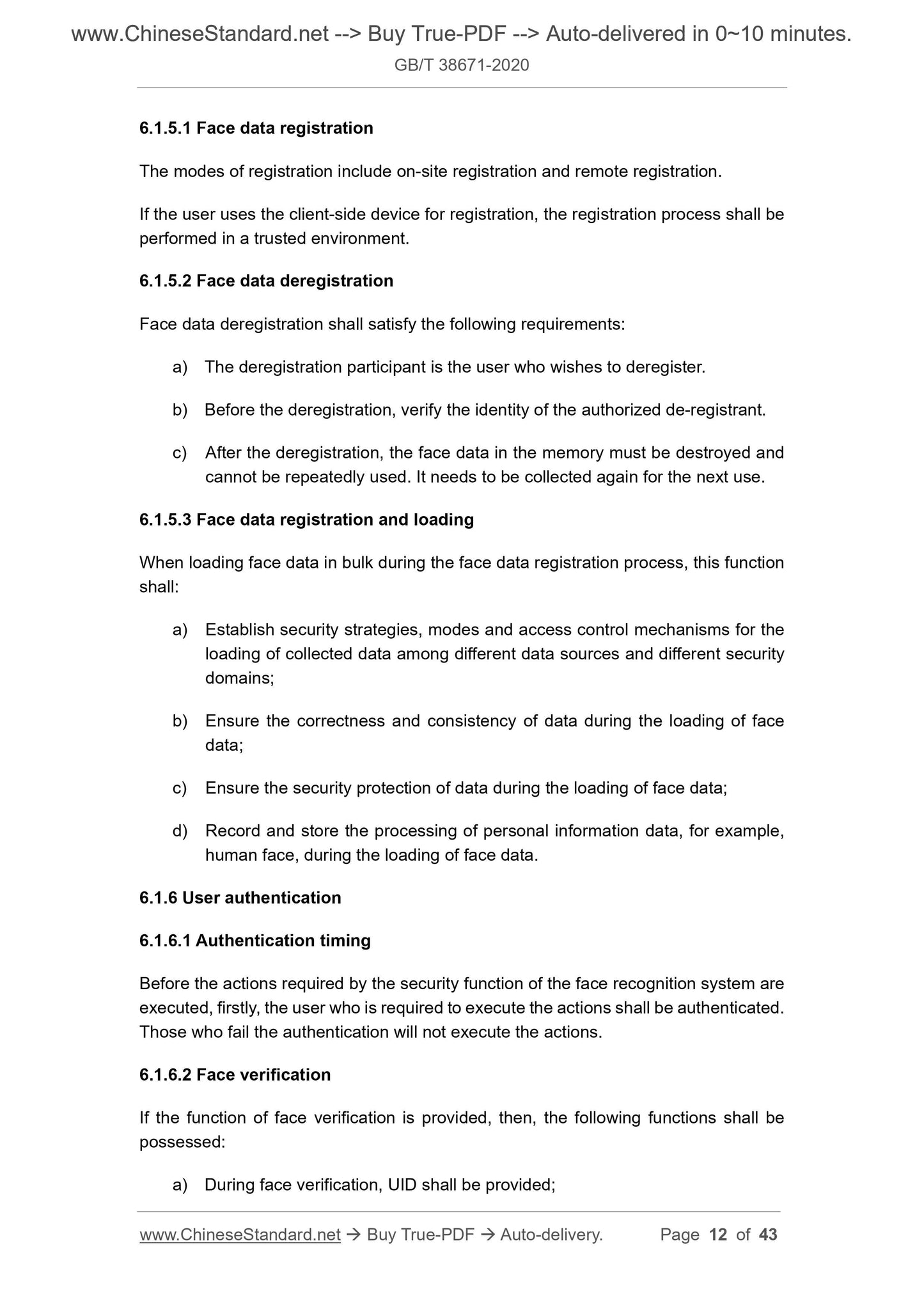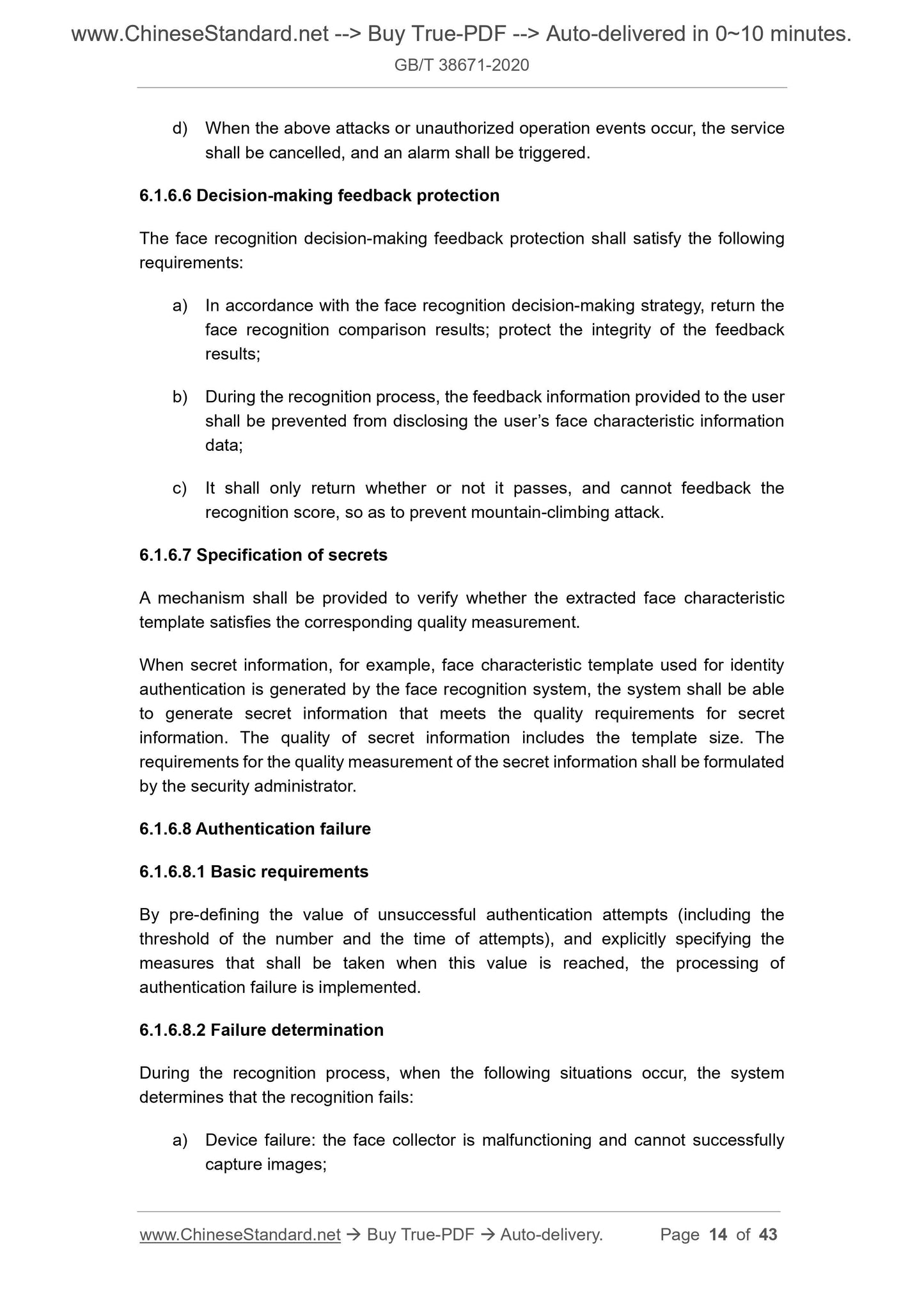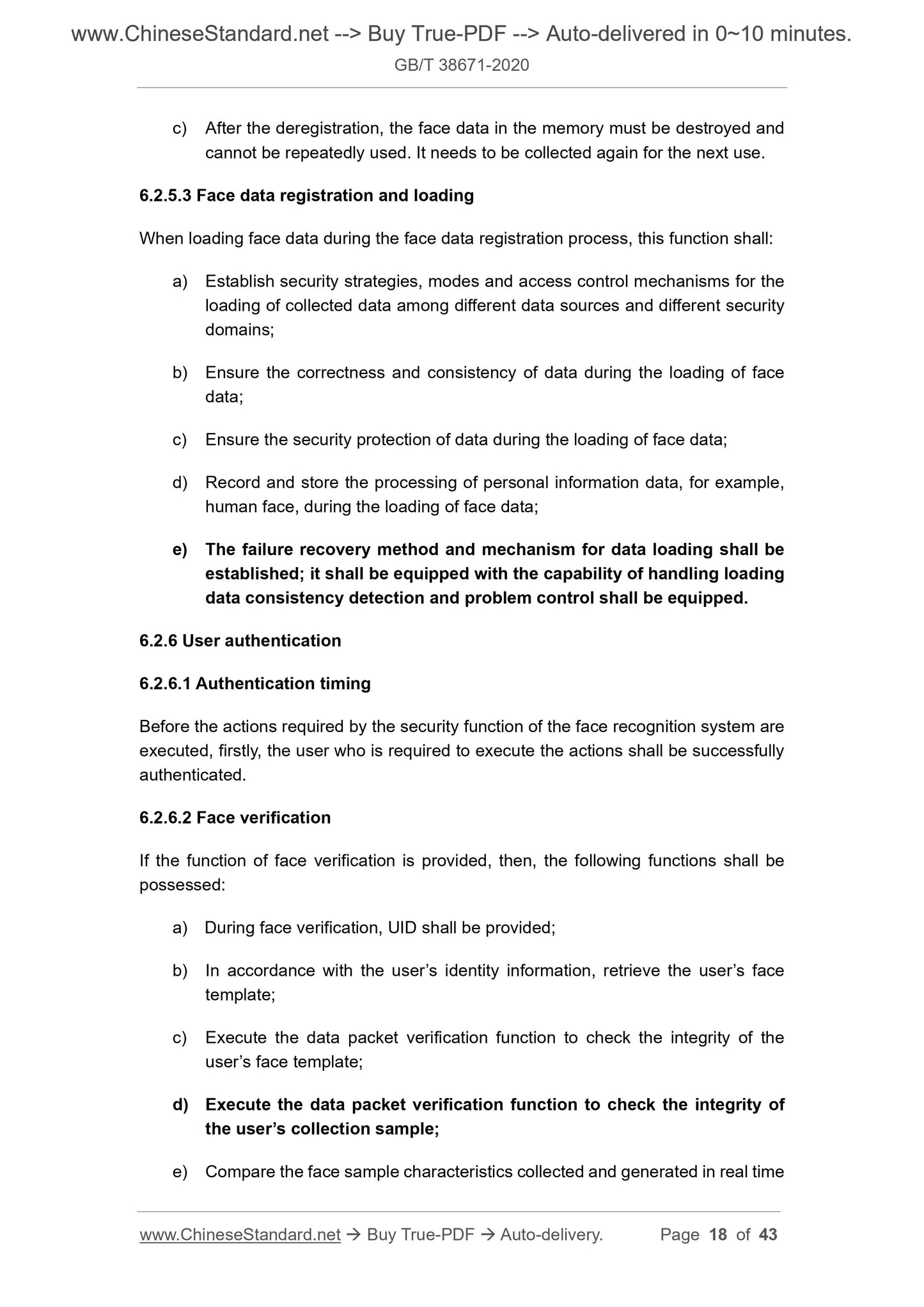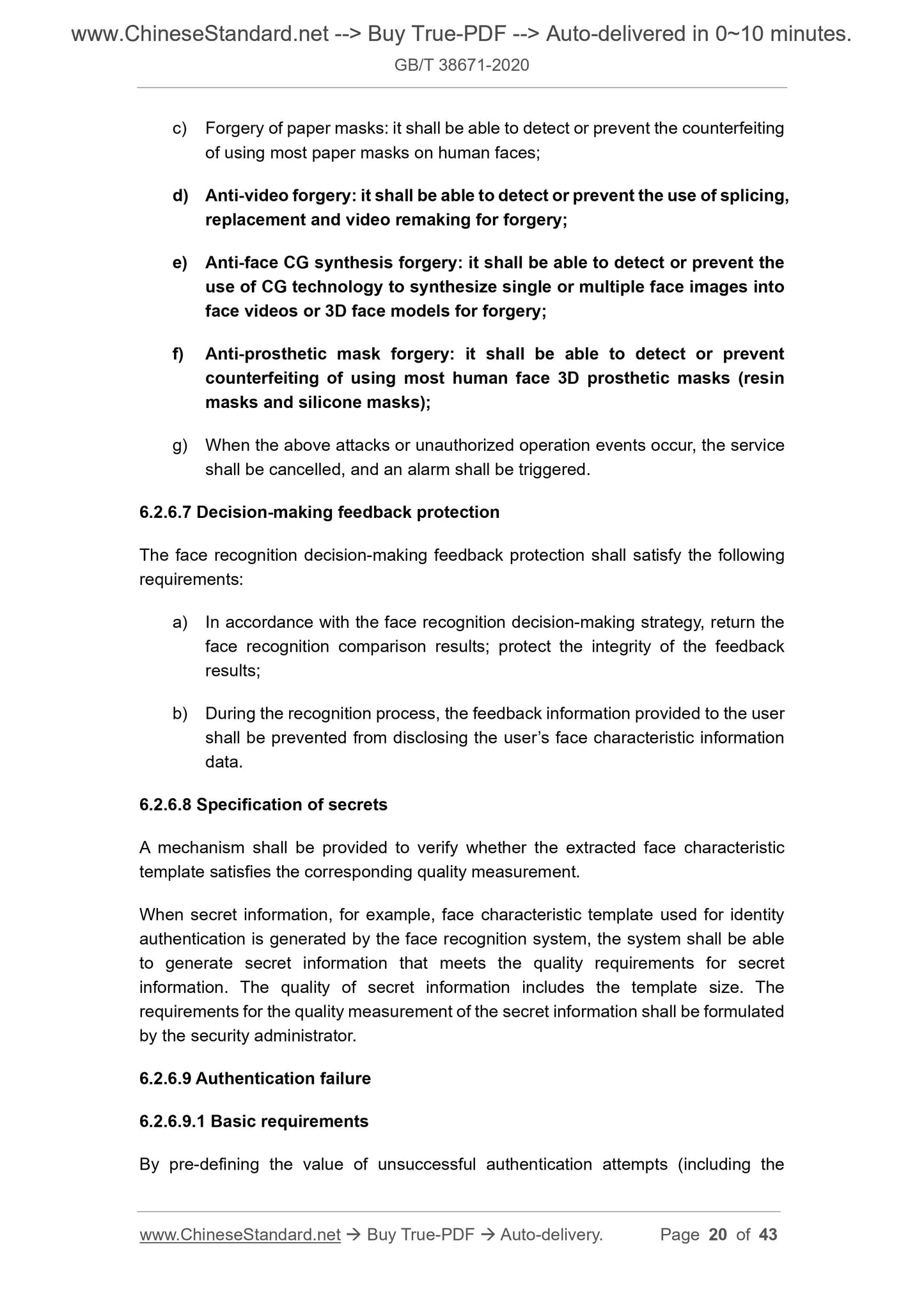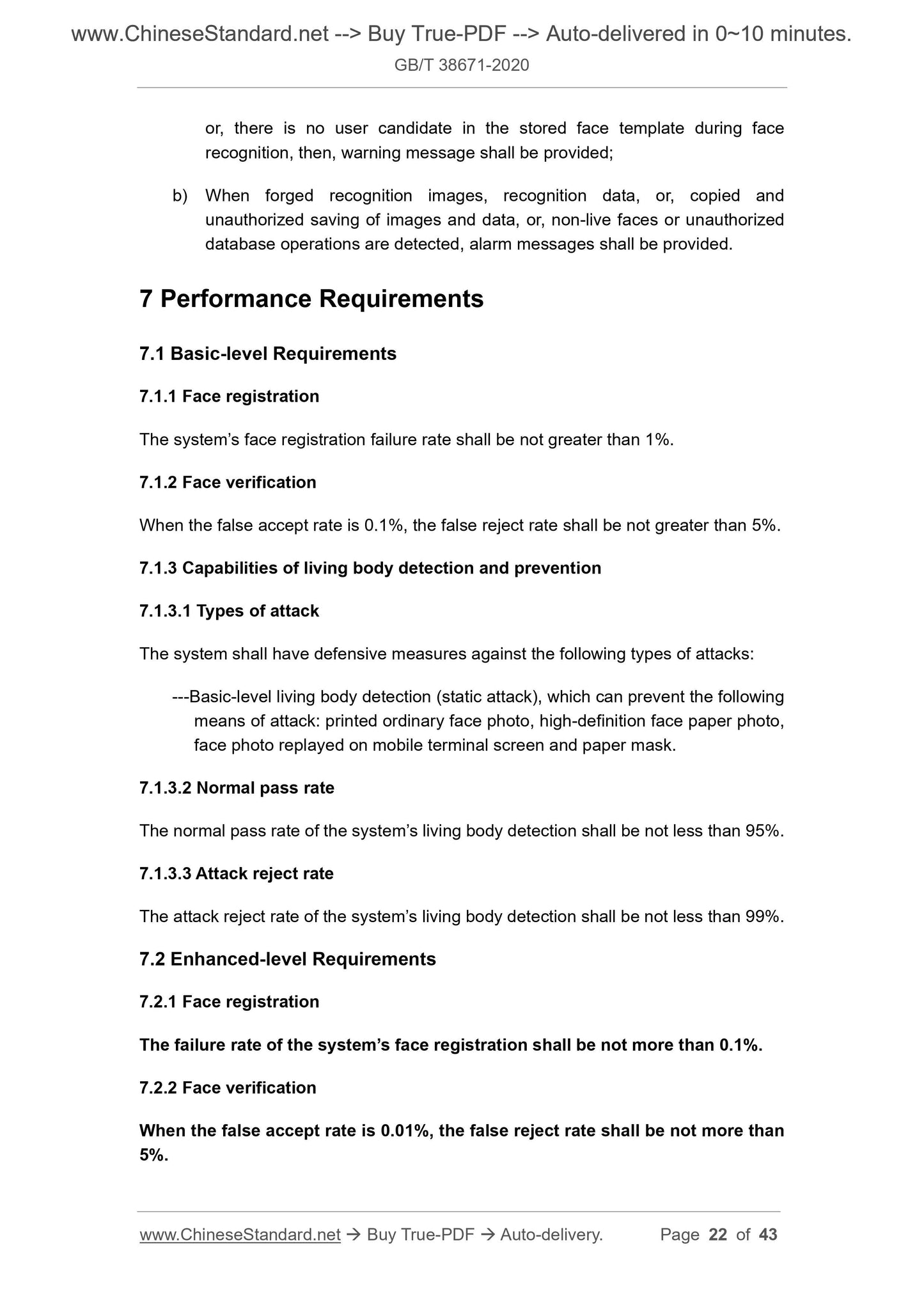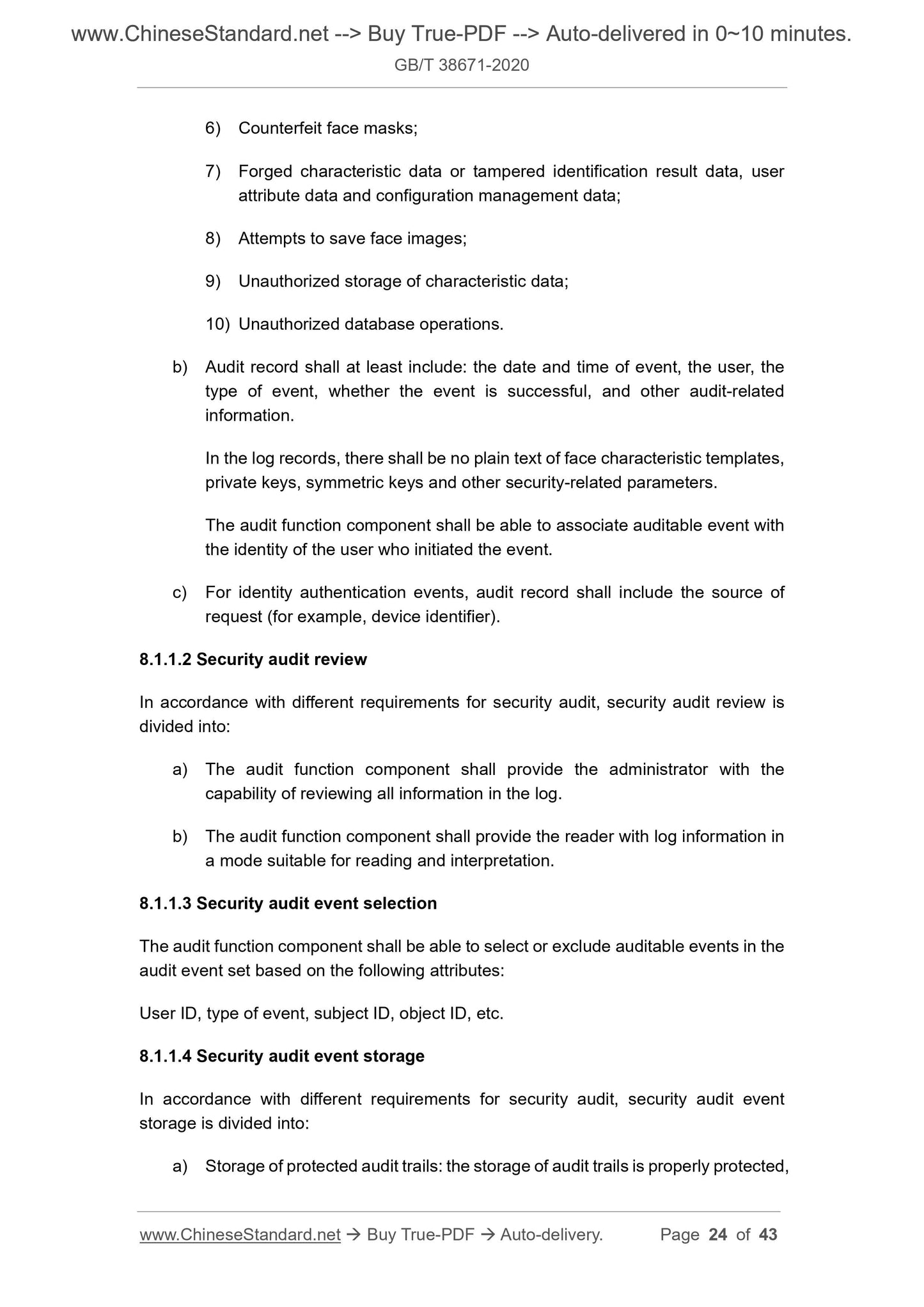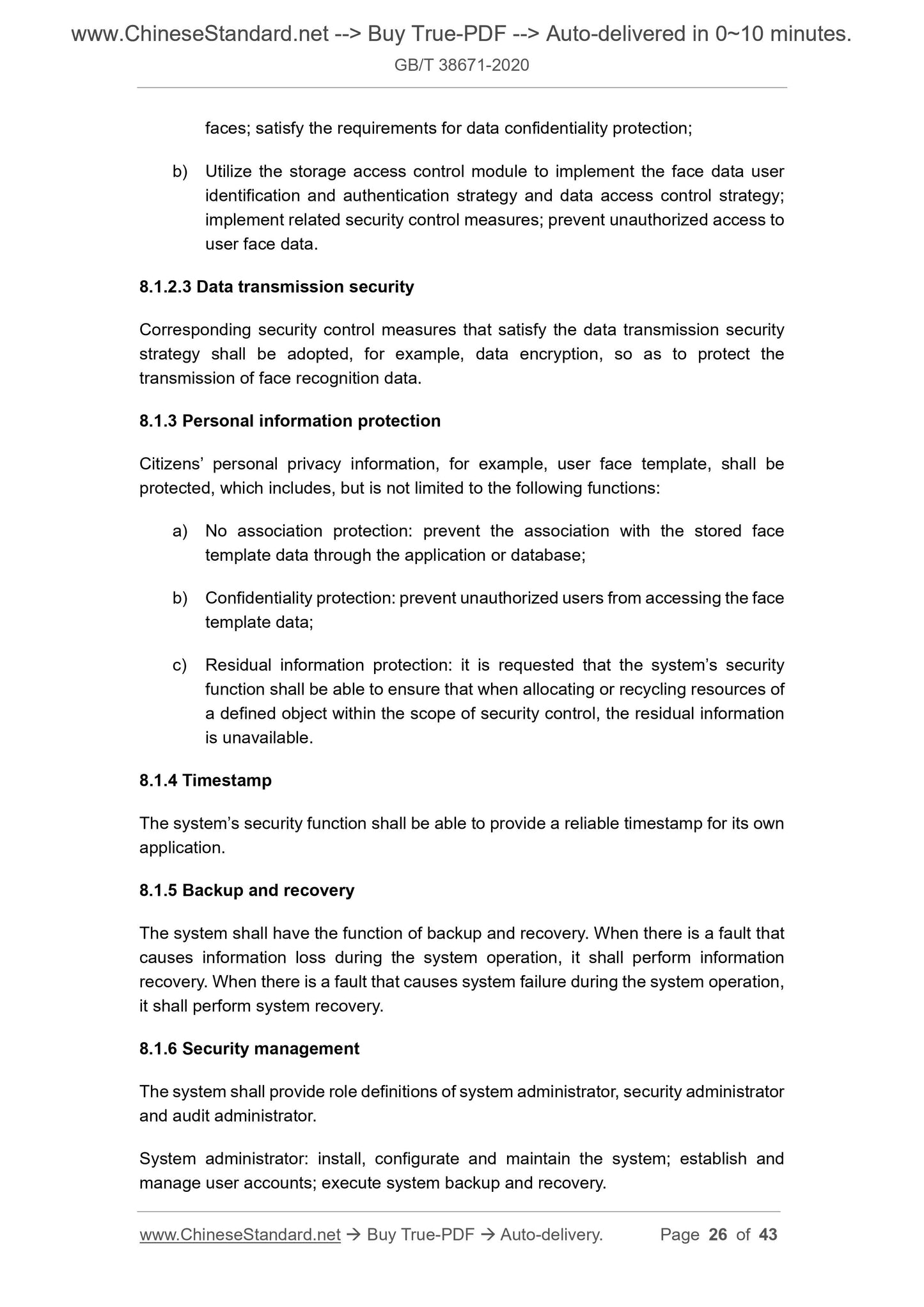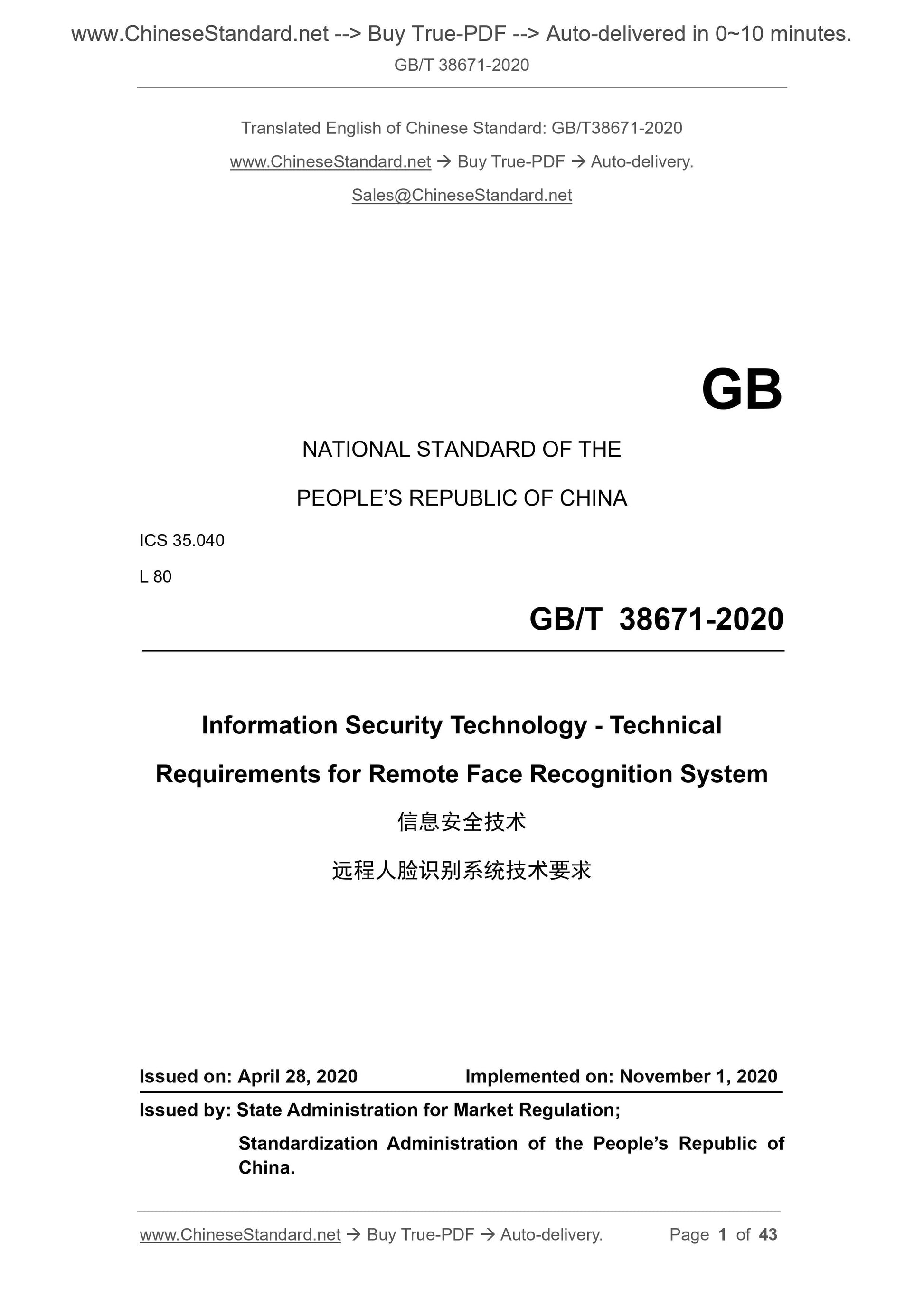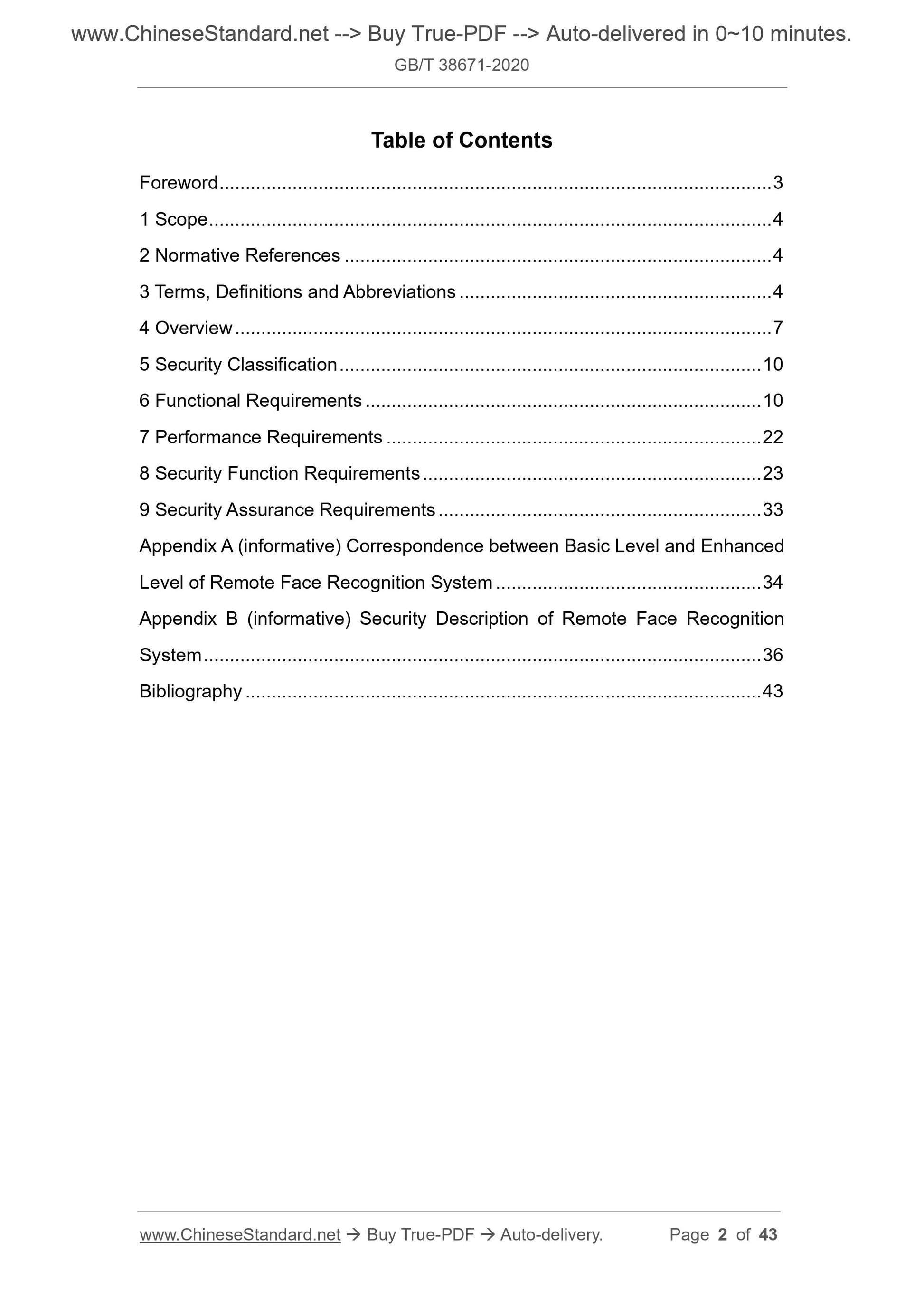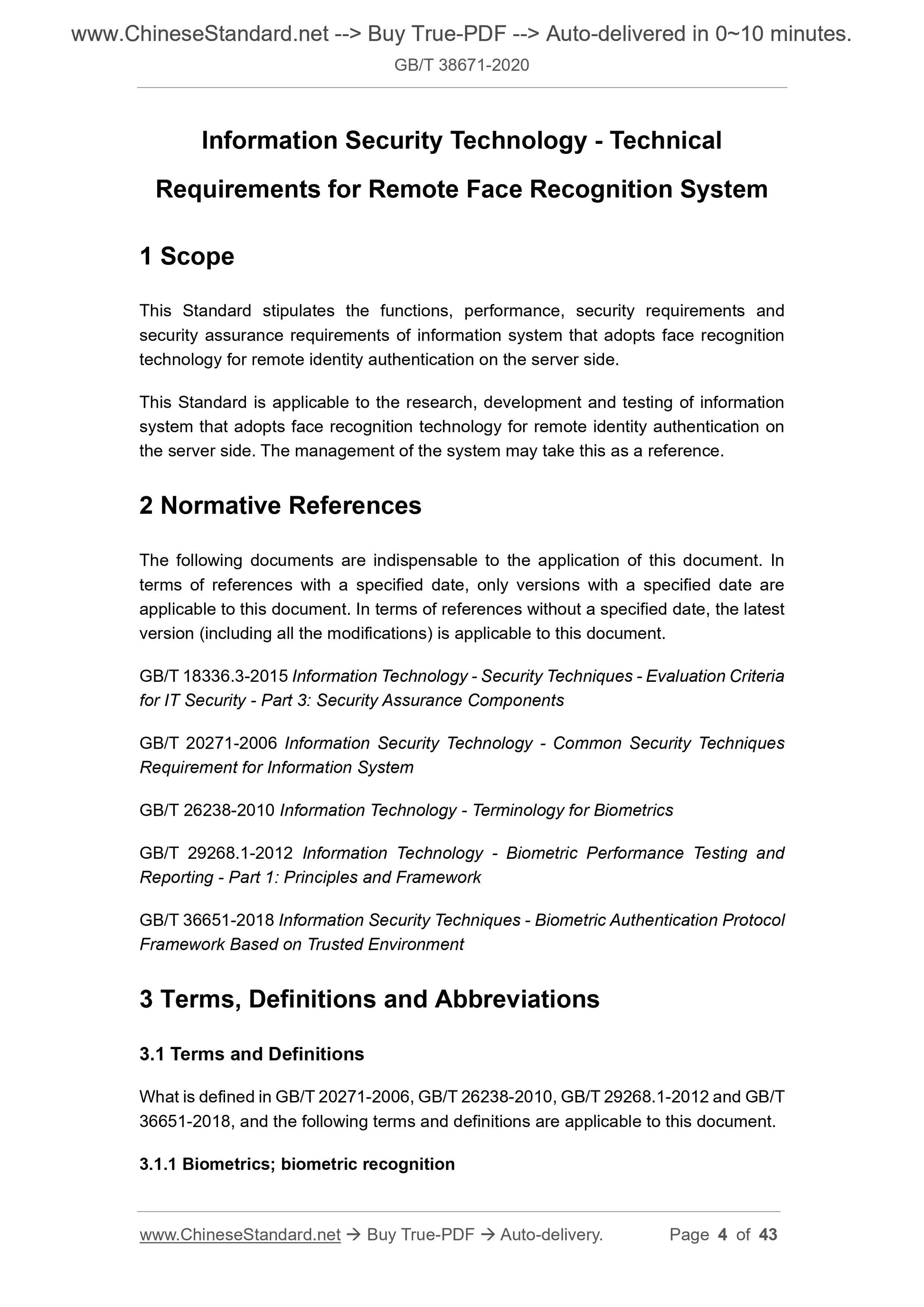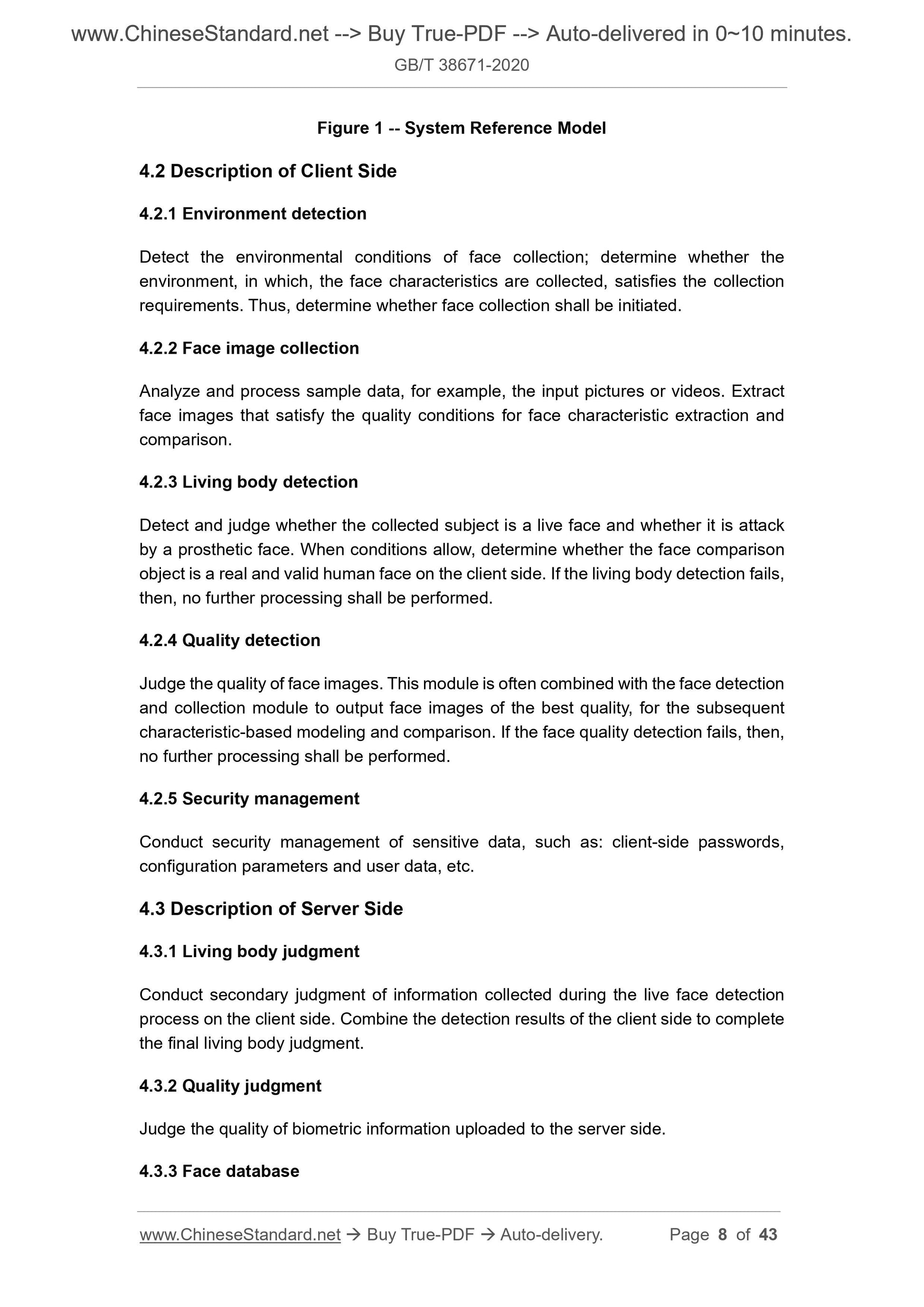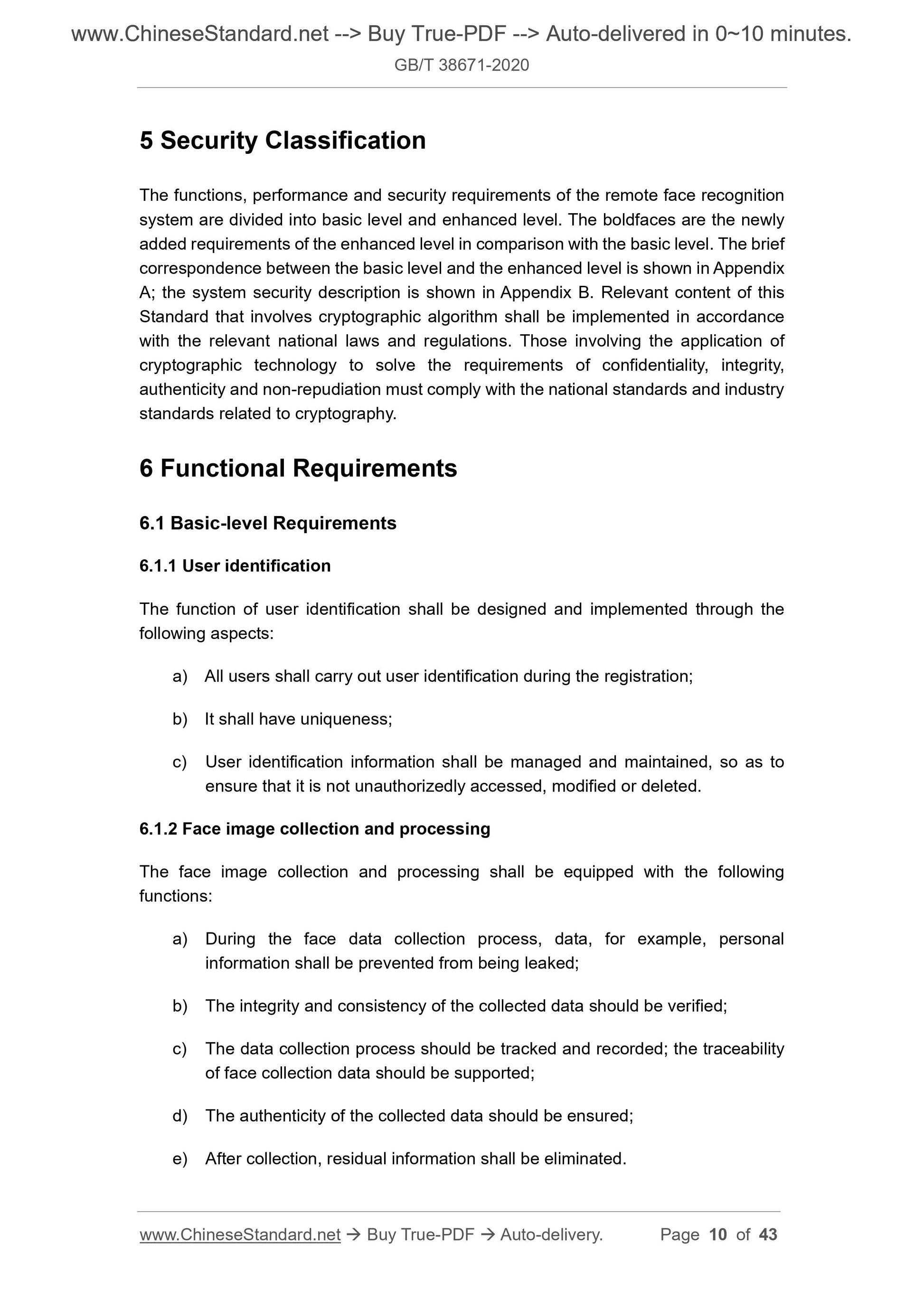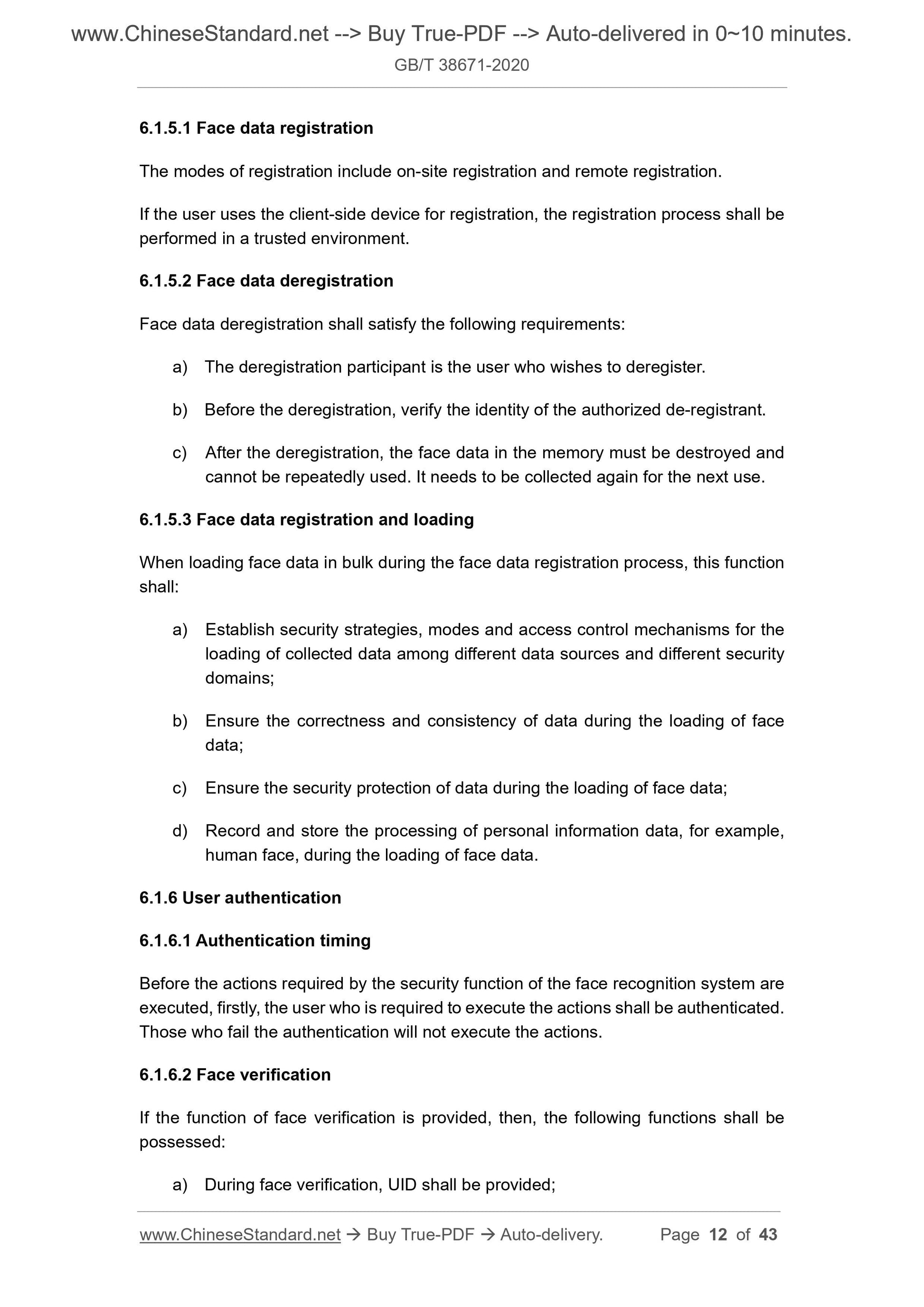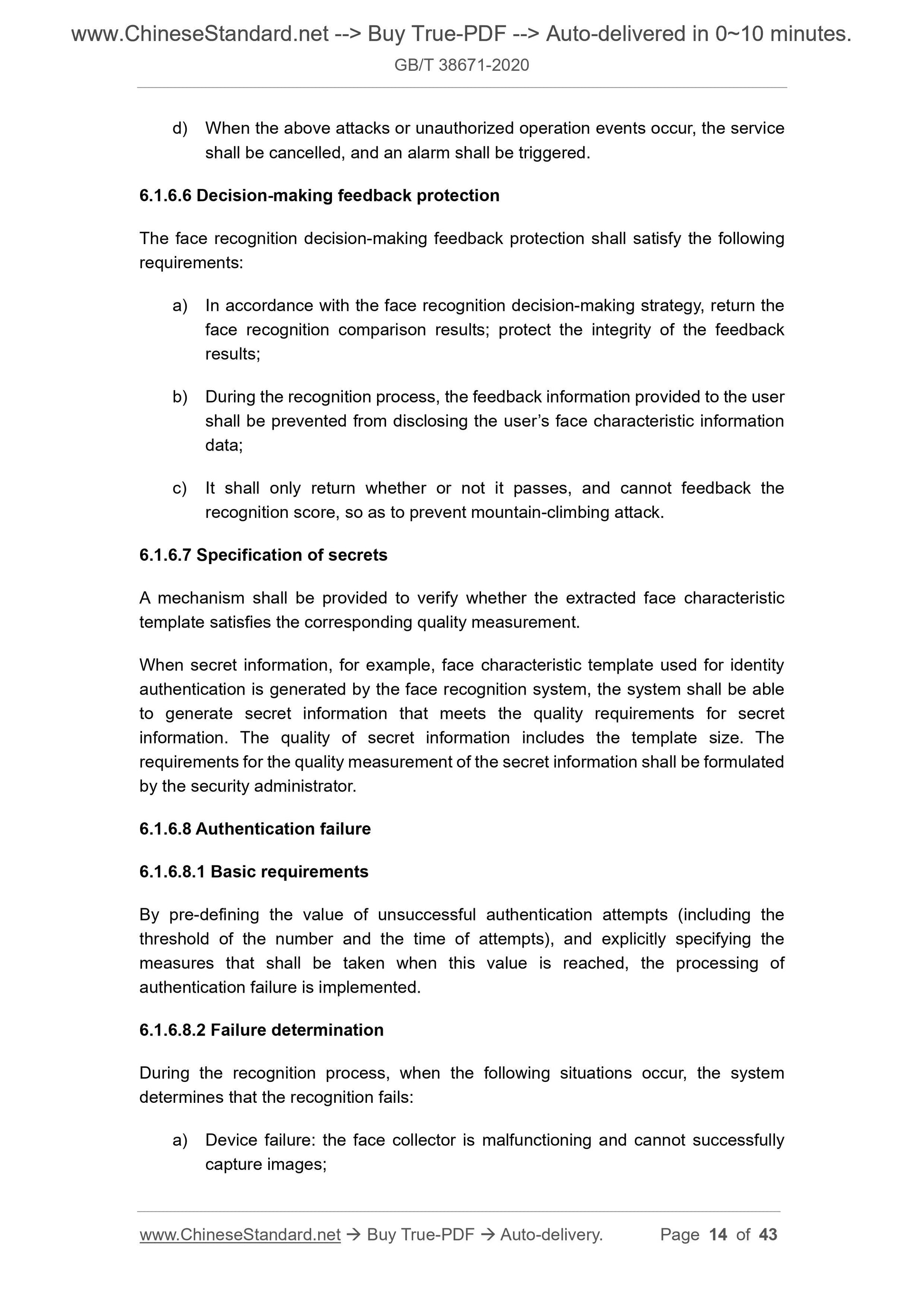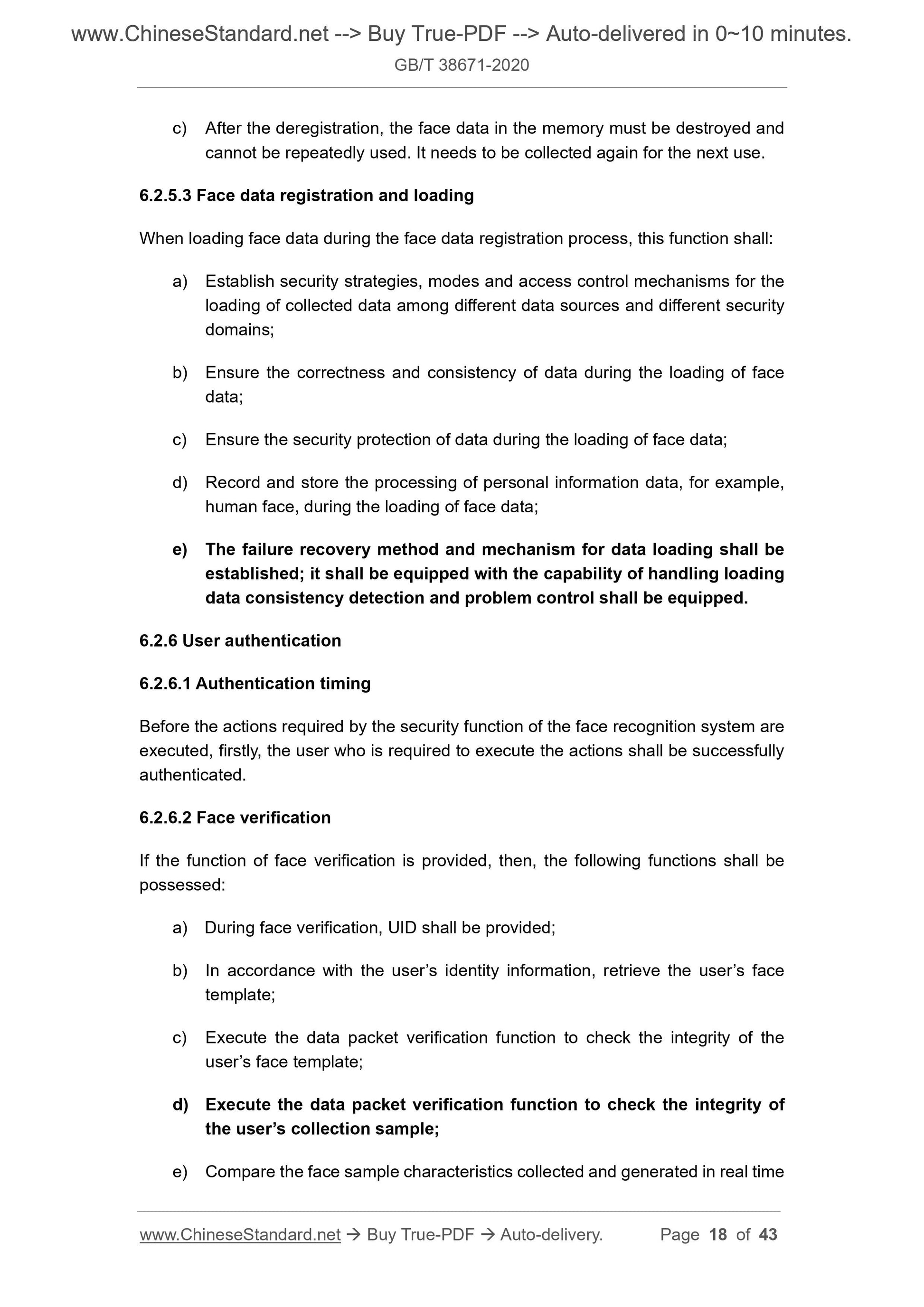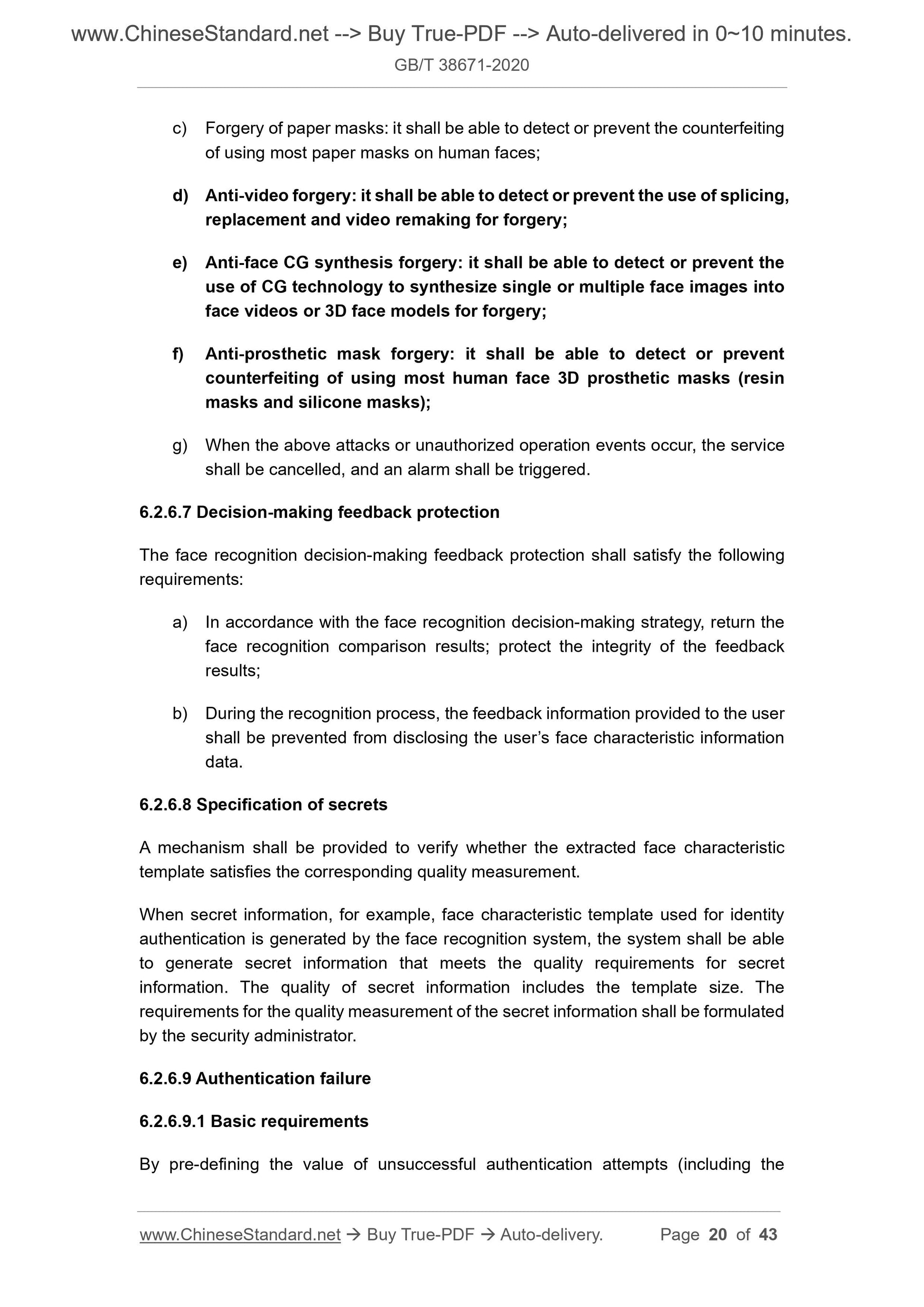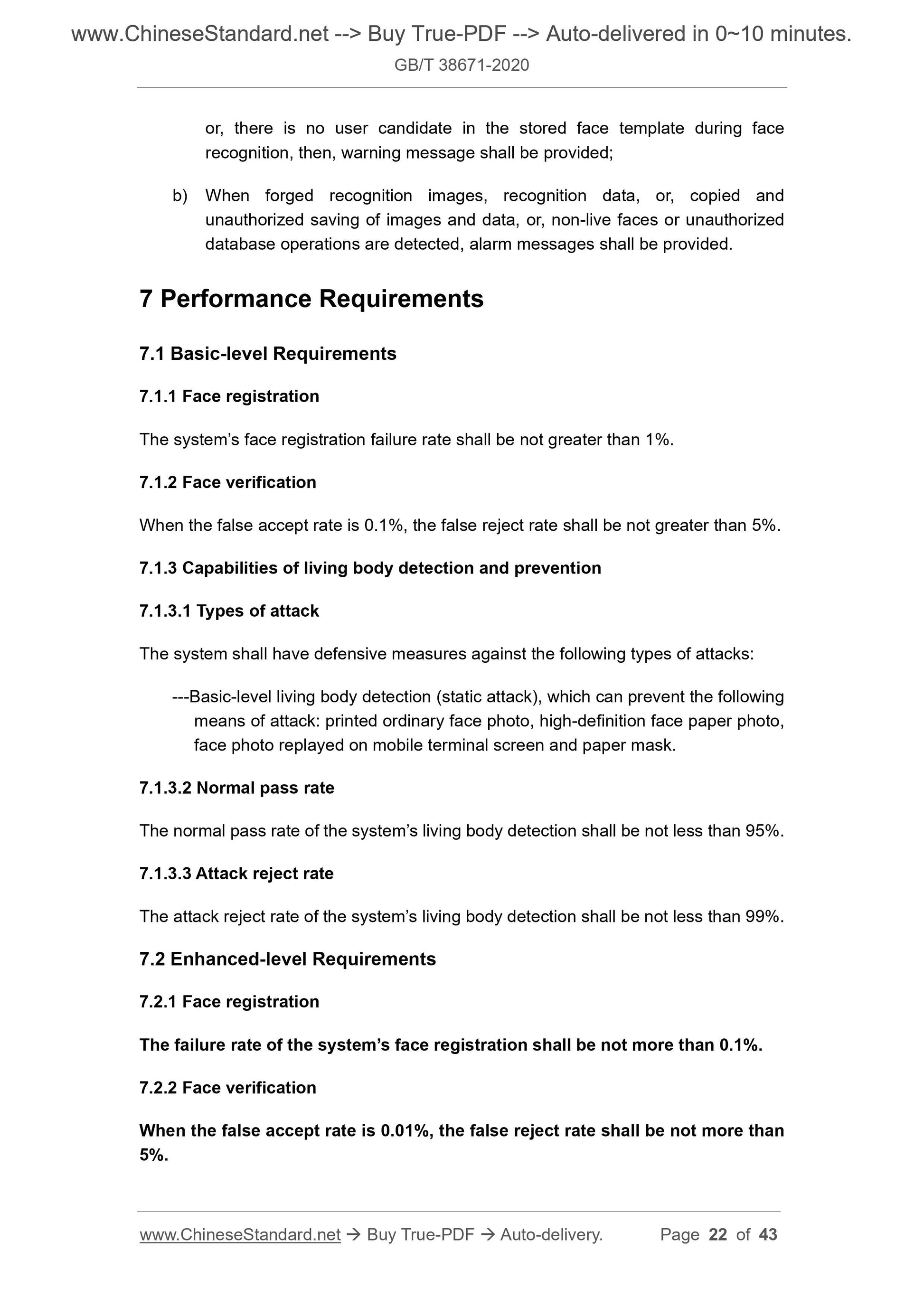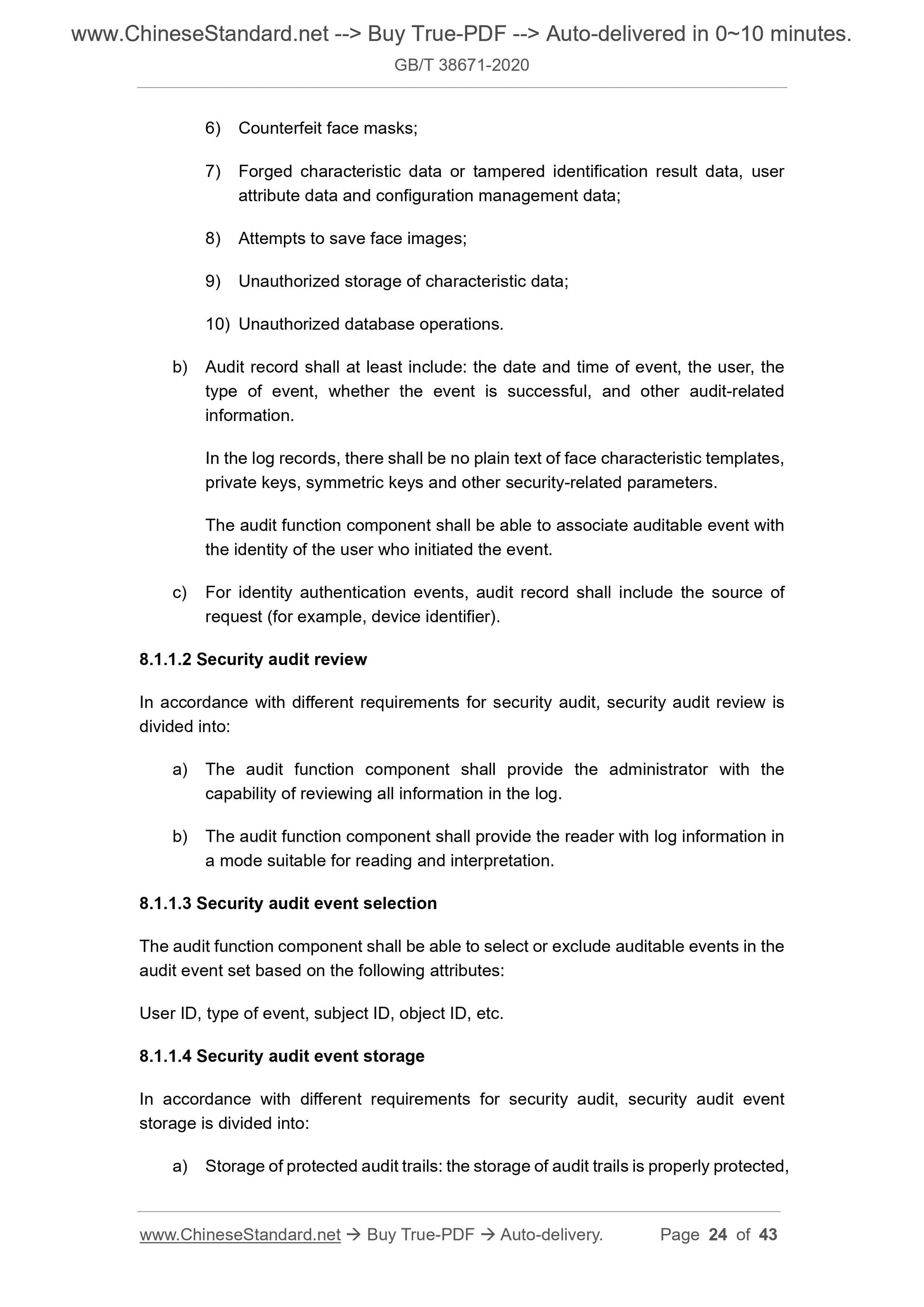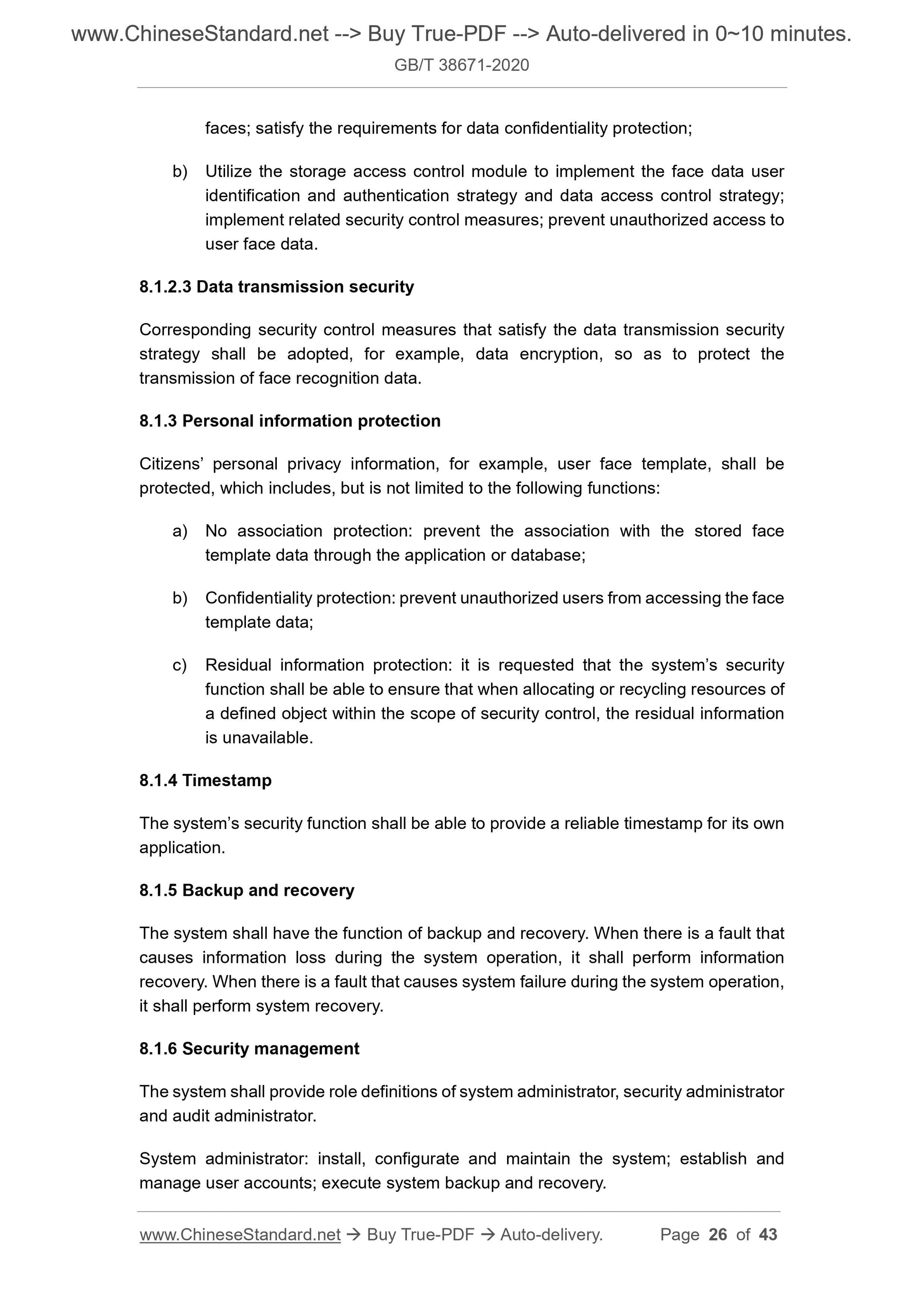1
/
of
12
www.ChineseStandard.us -- Field Test Asia Pte. Ltd.
GB/T 38671-2020 English PDF (GB/T38671-2020)
GB/T 38671-2020 English PDF (GB/T38671-2020)
Regular price
$395.00
Regular price
Sale price
$395.00
Unit price
/
per
Shipping calculated at checkout.
Couldn't load pickup availability
GB/T 38671-2020: Information Security Technology - Technical Requirements for Remote Face Recognition System
Delivery: 9 seconds. Download (and Email) true-PDF + Invoice.Get Quotation: Click GB/T 38671-2020 (Self-service in 1-minute)
Newer / historical versions: GB/T 38671-2020
Preview True-PDF
Scope
This Standard stipulates the functions, performance, security requirements andsecurity assurance requirements of information system that adopts face recognition
technology for remote identity authentication on the server side.
This Standard is applicable to the research, development and testing of information
system that adopts face recognition technology for remote identity authentication on
the server side. The management of the system may take this as a reference.
Basic Data
| Standard ID | GB/T 38671-2020 (GB/T38671-2020) |
| Description (Translated English) | Information Security Technology - Technical Requirements for Remote Face Recognition System |
| Sector / Industry | National Standard (Recommended) |
| Classification of Chinese Standard | L80 |
| Classification of International Standard | 35.040 |
| Word Count Estimation | 30,369 |
| Date of Issue | 2020-04-28 |
| Date of Implementation | 2020-11-01 |
| Quoted Standard | GB/T 18336.3-2015; GB/T 20271-2006; GB/T 26238-2010; GB/T 29268.1-2012; GB/T 36651-2018 |
| Issuing agency(ies) | State Administration for Market Regulation, China National Standardization Administration |
| Summary | This standard specifies the functions, performance, security requirements, and security assurance requirements of information systems that use face recognition technology to remotely perform identity authentication on the server side. This standard is applicable to the development and testing of information systems that use face recognition technology to remotely perform identity authentication on the server side. The management of the system can be used for reference. |
Share
